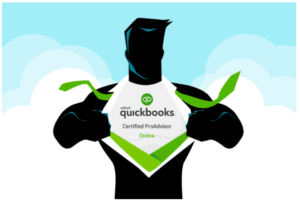
Another intangible benefit might be taking market share aware from a competitor. Secondly, there is a need to better understand and address the distributional effects of projects and decisions. It’s essential to evaluate and address how these can affect equity and social welfare.

And while you’re busy listing out all of those potential costs, don’t forget to consider the benefits too! These could be tangible, like increased revenue and efficiency gains, or intangible, like enhanced brand reputation or employee satisfaction. Now, list out all the potential costs – think materials, labor, time, and benefits, like increased revenue, efficiency gains, or intangible perks. This step is crucial; missing something here can skew your entire analysis. As you list out costs and benefits, sort them into the following categories.
What is meant by cost-benefit analysis?
The internal rate of return (IRR) refers to the discount rate that equalizes a project’s net present value (NPV) to zero. In essence, it represents the anticipated rate of return over the project’s life span. A cost-benefit analysis (CBA) is a practical technique that scrutinizes the advantages and drawbacks of various alternatives to enable better decision making.
Education and Workforce Development Cost-Benefit Analysis Guidance – Millennium Challenge Corporation
Education and Workforce Development Cost-Benefit Analysis Guidance.
Posted: Fri, 30 Jun 2023 07:00:00 GMT [source]
Please review the Program Policies page for more details on refunds and deferrals. We accept payments via credit card, wire transfer, Western Union, and (when available) bank loan. Some candidates may qualify for scholarships or financial aid, which will be credited against the Program Fee once eligibility is determined. Please refer to the Payment & Financial Aid page for further information.
How to Do a Cost-Benefit Analysis & Why It’s Important
Subtract the total costs from the total benefits to find the net benefit of each option. This comparison is the heart of your analysis—it shows you which choices give you the most financial upside. You’ll also need to choose how you’ll the main goal of using a cost-benefit analysis is to reach a measure and compare costs and benefits and what metric you’ll use. With so many complex factors to identify and monetize, it can be hard to know which costs and benefits to focus on first – or how to accurately quantify them.

It allows decision-makers to justify their decisions based on economic principles and to demonstrate that they are using resources in a responsible and effective manner. Account for possible shifts in essential elements that might influence the outcome. This could involve techniques such as scenario analysis or sensitivity analysis.
Types of Cost-Benefit Analysis
This result implies that the project will generate about $4,43 dollars per each $1 spent to cover expenses. The purpose of cost-benefit analysis is to have a systemic approach to figure out the pluses and minuses of various business or project proposals. The cost-benefit analysis gives you options and offers the best project budgeting approach to achieve your goal while saving on investment costs.
- To make a fair comparison in your analysis, you need to consider the present value of future costs and benefits.
- Running this analysis pits the forecasted expenses of each decision against the potential gains.
- In business, CBA evaluation may be used to assess the economic feasibility of a new product or service or to compare the costs and benefits of different investment opportunities.
- A benefit-cost ratio (BCR) may also be computed to summarize the overall relationship between the relative costs and benefits of a proposed project.
- Since no individual or organization has unlimited resources, cost-benefit analysis helps determine the optimal resource allocation.
It is at this point that a company should assess whether it is equipped to perform the analysis. For example, a company may realize it does not have the technical staff required to perform an adequate analysis. Before building a new plant or taking on a new project, prudent managers conduct a cost-benefit analysis to evaluate all the potential costs and revenues that a company might generate from the project. The outcome of the analysis will determine whether the project is financially feasible or if the company should pursue another project. As you make your recommendations, be transparent about your assumptions and the potential risks involved. Highlight how the benefits of your chosen option outweigh the costs, not just in monetary ways but also in terms of meeting strategic objectives or other non-financial benefits.
This means considering unpredictable costs and understanding expense types and characteristics. This level of analysis only strengthens the findings as more research is performed on the state of outcome for the project that provides better support for strategic planning endeavors. During the project scope development phase, key stakeholders should be identified, notified, and given a chance to provide their input along the process. The first step of a cost-benefit analysis is to understand your situation, identify your goals, and create a framework to mold your scope. The project scope is kicked off by identifying the purpose of the cost-benefit analysis. An example of a cost-benefit analysis purpose could be «to determine whether to expand to increase market share» or «to decide whether to renovate a company’s website».
It assists in establishing the total profitability of a project or decision, offering a precise depiction of the project’s worth in current dollar terms. In the end, cost-benefit analysis shouldn’t be the only business analytics tool or strategy you use in determining how to move your organization into the future. Cost-benefit analysis isn’t the only type of economic analysis you can do to assess your business’s economic state, but a single option at your disposal. Once you’ve compiled exhaustive lists of all costs and benefits, you must establish the appropriate monetary units by assigning a dollar amount to each one.
